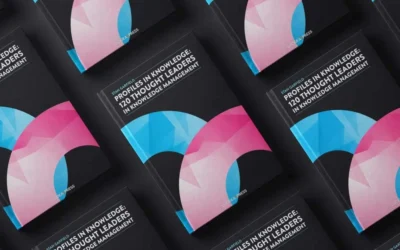KM Secret: Documents and Presentations

Stan Garfield
The types of documentation to provide include big picture documents, user guides, administrator guides, policies and procedures, and knowledge sharing documents.
Big Picture Documents
These are conceptual or overview documents. They help users understand the importance of knowledge management and their own role in making it succeed. Big picture documents are for those interested in a high-level view of knowledge management, including why things work the way they do, and available resources.
Examples of Big Picture Documents
- Strategy and Vision: defines the Top 3 Objectives, the KM Strategy, and a vision for how things should work
- Program Governance: describes how the KM program is governed
- Roles: defines the roles of KM leaders, project leaders, and knowledge assistants
- Priorities: defines the KM team’s priorities for the year
- Expectations: states the importance of KM to the organization and specifies the responsibilities of all professionals and managers
- Getting Started: explains basic KM concepts, what resources are available, and how to learn more
- Initiatives Inventory: lists all KM initiatives in the organization with sponsoring organizations, responsible individuals, and links to websites
- Overview: provides highlights of the KM program, details on all components, and screenshots of and links to all relevant websites
- Architecture: explains the structure of the KM environment, the standard taxonomy, how content is contributed, and how it is searched for
- Insights: provides an overview of the topic of Knowledge Management, including definitions, models, process maps, checklists, and industry examples
User Guides
These are written to help users understand how to do something. Knowledge assistants can refer users to these when providing support.
Examples of User Guides
- FAQs (Frequently Asked Questions): contains answers to the most typical questions about finding content; sharing; asking questions; tools; external access; communities; collaboration; archiving; expectations; time reporting; contacts, documentation; rewards; training, and support
- How to Collaborate: describes the processes and technologies that are used to encourage employees to collaborate and participate in communities
- Communities: explain how to create, build, sustain, and participate in communities
- Face-to-face Knowledge Sharing: describes why this is important, different types, guidelines, examples, suggestions, and pitfalls to avoid
- People Guides: explain how to use a particular KM people component; e.g., the knowledge help desk, measurements, or incentives
- Process Guides: explain how to use a particular KM process; e.g., capture, reuse, or lessons learned
- Tools Guides: explain how to use a particular KM tool; e.g., team space, repository, or threaded discussion
- How to Ask for Help: describes the key elements of a successful help request for those posting a question to a threaded discussion, or sending an email message to a large distribution list
- How to Record Time: explains how time spent on KM activities should be reported in the organization’s labor tracking system
- How to Track Accomplishments: describes how to track KM accomplishments in order to take credit for them during performance reviews
Policies and Procedures
These provide details on standard processes required of users. They may be part of an official document repository, in which case, link to them from the KM documentation web page.
Examples of Policies and Procedures
- Collaboration Policy: defines the policy for how teams should collaborate
- Knowledge Capture and Reuse Policy: defines the policy for how to capture and reuse knowledge
- Knowledge Capture and Reuse Procedure: details the steps to follow in support of the policy
- Records Management Policy: defines the policy for how to manage the organization’s business records
- Archiving Procedure: details the steps to follow in support of the records management policy’s archiving rules

Stan Garfield
Similar Posts
Only You Can Prevent Knowledge Loss: How to Practice “Knowledge Archaeology”
An overview of ways in which knowledge is lost, with examples of how to perform knowledge archaeology to recover and restore it.
Ready to Read: Profiles in Knowledge: 120 Thought Leaders in Knowledge Management
We are pleased to announce that Stan Garfield’s new book, Profiles in Knowledge: 120 Thought Leaders in Knowledge Management, is now available from Lucidea Press.
Lucidea’s Lens: Knowledge Management Thought Leaders Part 92 – Jay Liebowitz
Jay Liebowitz is a professor, consultant, author, and editor. His research interests include knowledge management, data analytics, intelligent systems, intuition-based decision making, IT management, expert systems, and artificial intelligence.
Lucidea’s Lens: Knowledge Management Thought Leaders Part 91 – Frank Leistner
The late Frank Leistner was the former Chief Knowledge Officer for SAS Global Professional Services, where he founded the knowledge management program and led a wide range of knowledge management initiatives up until 2012.




Leave a Comment
Comments are reviewed and must adhere to our comments policy.
0 Comments